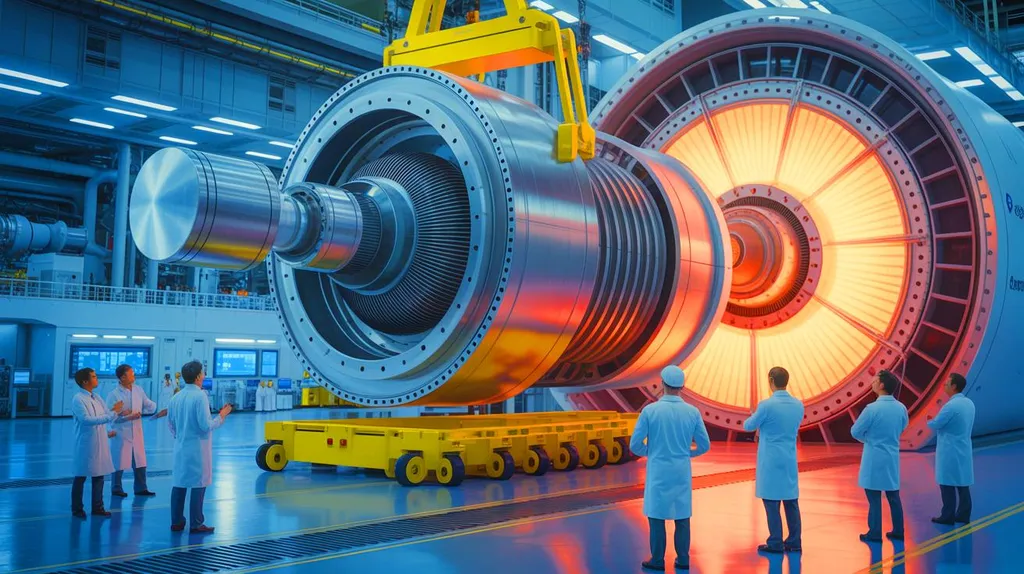In the quest to enhance the performance of powerful magnets used in green energy technologies, researchers have made a significant stride. A team led by Qiang Li from Northeastern University in China has uncovered how the diffusion of terbium (Tb) can bolster the magnetic properties of RE–Fe–B sintered magnets, a critical component in wind turbines and electric vehicles. Their findings, published in the journal *Materials Research Letters* (translated as “Materials Research Letters”), shed light on the intricate dance of atoms at the grain boundaries of these magnets, offering a promising path to more efficient and robust magnetic materials.
At the heart of this research lies the grain boundary diffusion process, a technique used to infuse terbium into the magnet’s structure. This process not only enhances the magnet’s resistance to demagnetization but also improves its performance across a wide range of operational temperatures. “The distinct atomic distribution in the Ia-3m-type phase, observed via high-angle annular dark-field (HAADF) images, was a key discovery,” explains Li. This phase, characterized by its unique atomic arrangement, exhibits a lower lattice misfit with the main magnetic phase (RE2Fe14B), which is crucial for enhancing the magnet’s coercivity—the measure of its resistance to demagnetization.
The research also revealed that the grain boundaries with low coherence tend to accumulate copper (Cu), forming Cu-rich zones. These zones, combined with the lower lattice misfit, play a pivotal role in achieving higher coercivity. “The lower lattice misfit and Cu-rich zones are critical for higher coercivity,” Li notes. This finding underscores the importance of precise control over the atomic-scale structure of these magnets to optimize their magnetic properties.
The implications of this research are profound for the energy sector. High-performance magnets are essential for the generators in wind turbines and the motors in electric vehicles, where efficiency and reliability are paramount. By improving the coercivity and thermal stability of these magnets, the research paves the way for more efficient and durable energy technologies. “This work provides a deeper understanding of the microstructural mechanisms that govern the magnetic properties of RE–Fe–B magnets,” Li explains. “It offers a roadmap for developing next-generation magnets that can meet the demanding requirements of the energy sector.”
As the world transitions towards renewable energy and sustainable transportation, the demand for high-performance magnets is set to soar. The insights gained from this research could accelerate the development of advanced magnetic materials, driving innovation in the energy sector and beyond. With the findings published in *Materials Research Letters*, the scientific community now has a clearer picture of how to harness the power of grain boundary diffusion to create magnets that are not only stronger but also more resilient in the face of varying operational conditions.
In the broader context, this research highlights the importance of fundamental materials science in addressing real-world challenges. By delving into the atomic-scale details of magnetic materials, scientists can unlock new possibilities for enhancing their performance and reliability. As Qiang Li and his team continue to explore the intricacies of grain boundary diffusion, their work could shape the future of magnetic materials, paving the way for a more sustainable and energy-efficient world.

